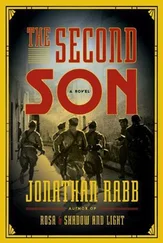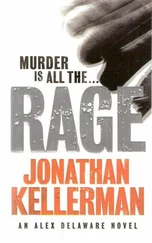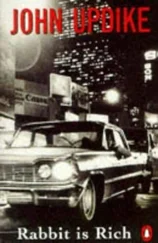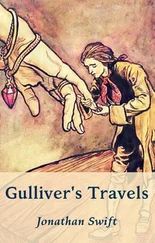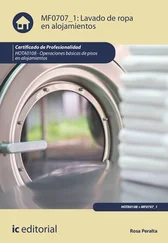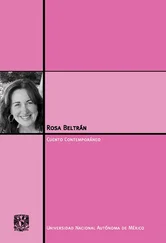Jonathan Rabb - Rosa
Здесь есть возможность читать онлайн «Jonathan Rabb - Rosa» весь текст электронной книги совершенно бесплатно (целиком полную версию без сокращений). В некоторых случаях можно слушать аудио, скачать через торрент в формате fb2 и присутствует краткое содержание. Жанр: Политический детектив, на английском языке. Описание произведения, (предисловие) а так же отзывы посетителей доступны на портале библиотеки ЛибКат.
- Название:Rosa
- Автор:
- Жанр:
- Год:неизвестен
- ISBN:нет данных
- Рейтинг книги:4 / 5. Голосов: 1
-
Избранное:Добавить в избранное
- Отзывы:
-
Ваша оценка:
- 80
- 1
- 2
- 3
- 4
- 5
Rosa: краткое содержание, описание и аннотация
Предлагаем к чтению аннотацию, описание, краткое содержание или предисловие (зависит от того, что написал сам автор книги «Rosa»). Если вы не нашли необходимую информацию о книге — напишите в комментариях, мы постараемся отыскать её.
Rosa — читать онлайн бесплатно полную книгу (весь текст) целиком
Ниже представлен текст книги, разбитый по страницам. Система сохранения места последней прочитанной страницы, позволяет с удобством читать онлайн бесплатно книгу «Rosa», без необходимости каждый раз заново искать на чём Вы остановились. Поставьте закладку, и сможете в любой момент перейти на страницу, на которой закончили чтение.
Интервал:
Закладка:
Taubmann stared uncertainly until, with a long exhalation, he nodded.
“Wonderful,” said Hoffner. “Is it some kind of blueprint for different meshes?”
“Some kind of-oh, I see what you mean. Well, yes and no. I suppose one could call them blueprints, but they’re more variations on each design.”
“Variations?” Hoffner had figured that out for himself back at the Alex. “But each row looks identical. I thought it might be some sort of exercise?”
Taubmann’s smile returned. “To the untrained eye, perhaps, mein Herr. But a point tude is not meant for the untrained eye. It comes from the French. ‘Point study.’ Of course, the term is inaccurate. A better way to describe it would be ‘flow study,’ or perhaps ‘path study.’ Even those don’t capture the art one finds in these.”
Hoffner had been right. It was the way in which Wouters had drawn them that differentiated each sketch. “I don’t understand,” he said.
Taubmann invited Hoffner to bend over the page more closely. “Identical in design, yes, but not in the way they are drawn.” Taubmann leaned in to illustrate as he spoke. “Each of these drawings begins at a different point on the mesh. The needle, or in this case the pen, then follows the path of the design using very specific directional markers that tell the artist when to loop back, when to bring the thread under or over, so forth and so on. Those shifts in movement occur at the picots, or knots, throughout the design.” Taubmann sat up. “The point of origin determines the movement of the needle throughout the entire mesh. Change the point of origin, and the design-even though seemingly identical-is nonetheless subtly and significantly altered.”
Hoffner nodded. He had been listening with only half an ear since Taubmann had mentioned the words “directional markers.” It suddenly struck him how close he had been to unmasking the design, all along. He had always understood it best through movement, in the ebb and flow of the city, and here it was, that very movement reflected in the twists and turns of the needle. It was not enough to take the little pins in his map and search for the pattern. One had to understand the flow of the design. That was the key to the placement.
More than that, the design itself told the “artist” where to go, which meant that the design, in some way, knew where its next crucial change in direction would be. In other words, all Hoffner needed to do was to find the point of origin for the diameter-cut design, and he would be able to follow its flow to Wouters’s next dumping site. At least that was the theory.
“So, if you have the point of origin,” said Hoffner, “you know which direction the needle will always move, and which major knots along the way it will hit.”
“Precisely,” said Taubmann. He was now enjoying himself. “But it gets even better. Most lacemakers believe that these kinds of rare designs also have an optimal point of origin-that is, a singular point of entry that will create the ideal mesh.” Taubmann once again had Hoffner’s full attention. “That’s why there are so many versions of the same design in each row. The artist is looking for the ideal mesh. Or, rather, he is waiting for the ideal mesh to reveal itself. In a way, the point tude turns a mesh into a living, breathing thing, with the key to its own perfection hidden within it. Remarkable, wouldn’t you say? That’s why they spend so much time on these points tudes. Or at least why they used to. These days, machines churn out the designs with no care for optimal mesh. Shame, really.”
An ideal mesh, thought Hoffner. Living and breathing. Of course. He remembered van Acker’s first interview with Wouters: It took time to find the ideal. It was perfect. In Wouters’s twisted mind, the diameter-cut-originated at its optimal point-was actually breathing life into his victims.
Taubmann picked up the pages. “In this particular study, the artist achieves the ideal mesh always on the seventh sketch. That’s a bit odd, I suppose, but it does make for a very nice symmetry.” He extended one of the pages to Hoffner. “I’m sure you can see the difference in the last ones in each of the rows. They’re slightly more-well, perfect.”
“Yes,” said Hoffner, not really looking. He reached into his coat pocket and pulled out another single sheet. He held it out to Taubmann. It was Hoffner’s rendering of the diameter-cut design. “And is this one of these rare designs?”
Taubmann hesitated. It was clear from his expression that he was done with the lesson.
“Please, Herr Taubmann,” Hoffner said kindly. “This is the last, I promise.”
Taubmann stared a moment longer, then took the page. His brow furrowed as he studied it. “It’s very rudimentary. You’re sure this is a lace design?”
“That’s what I’m asking you, Herr Taubmann.”
Taubmann continued to scan the page as he spoke: “It might be.” He suddenly looked up. “This isn’t about buying lace, is it, Herr Inspector?”
Taubmann’s frankness was wholly unexpected. Hoffner had never understood why people asked such questions. Surely they knew there could be no answers. “The drawing, Herr Taubmann. Is it one of these designs?”
Taubmann’s discomfort grew. “I’m not really an expert, Herr Inspector.”
“You’re being modest.”
“No,” said Taubmann more forcefully. “I’m really not.”
Hoffner saw the uneasiness in Taubmann’s eyes. This was not something he readily admitted. “Then who is?” asked Hoffner.
The answer came without hesitation. “Emil Kepner. He’s the best in the city. In fact, I’m studying with him.” Taubmann did his best with a smile. “You see, I hope to have my own shop one day. When I’ve put enough money away.”
“Where can I find this Kepner?”
Fichte answered: “Kleiststrasse.” Both men turned to him. Fichte explained: “He owns one of the places I tried last week. Very high-end.”
Hoffner turned to Taubmann. “So Herr Kepner would know about my drawing?”
“Absolutely,” said Taubmann. “No one in Berlin knows lace like Emil.”
“You have the address?”
“He’ll be home, by now, mein Herr. ” Again, Taubmann tried a smile. “You can see why I want my own shop.”
Hoffner was growing impatient. “Then his address there. You have that?”
Taubmann’s confusion returned. “It’s Friday evening, mein Herr. It’s the man’s home.”
“I’m aware of that, Herr Taubmann.” Hoffner was no longer the genial customer. “I’m also a Kripo detective. Do you have the address?”
Taubmann’s face paled. Six minutes later, Hoffner and Fichte were outside, heading for Charlottenburg.
The street names are what give everything away: Goethe, Schiller, Herder, Kant. If the brighter glow from the lampposts, or the whiter shine on the pavements, fails to tip off an errant wanderer that he has strayed too far, then the signs above are a final warning to turn back, now. Charlottenburg had never been satisfied merely to hold tightly to the city’s purse strings; it had to stake a claim to her genius, as well. The fact that Goethe and Herder had spent most of their productive years in Weimar, Schiller in Jena and then Weimar, and Kant forever in Knigsberg, had never deterred the privileged few from assuming their rightful lineage. Hoffner and Fichte were now in the land of the divine. They were meant to tread carefully.
Among friends, Herr Kepner was always heard to say that he lived in Weimar: after all, his house was on the corner where Schiller and Herder met. Very few ever got the joke, but they laughed anyway. Kepner was that sort of man: always a few steps ahead, but on a road no one else seemed all that eager to follow.
Читать дальшеИнтервал:
Закладка:
Похожие книги на «Rosa»
Представляем Вашему вниманию похожие книги на «Rosa» списком для выбора. Мы отобрали схожую по названию и смыслу литературу в надежде предоставить читателям больше вариантов отыскать новые, интересные, ещё непрочитанные произведения.
Обсуждение, отзывы о книге «Rosa» и просто собственные мнения читателей. Оставьте ваши комментарии, напишите, что Вы думаете о произведении, его смысле или главных героях. Укажите что конкретно понравилось, а что нет, и почему Вы так считаете.


